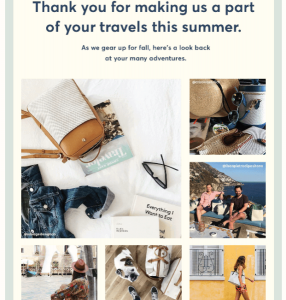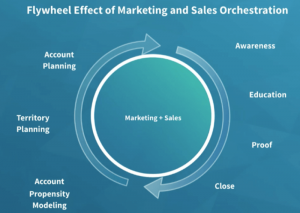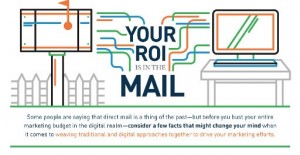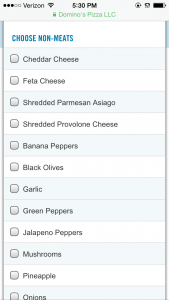According to the GEM Global Report, 3 businesses are launched every second! Unbelievable? Check out the visualization of startup births and death in “real-time’ here. The numbers are unbelievable and staggering. With the rising number of startup ventures, formulating and executing effective social media exposure plans becomes complicated on three levels:
- Competition
- Knowledge & Skills
- Budget Constraints
The rising numbers in the startup ecosystem increases competition levels across similar operational verticals. For example, it is not uncommon to see food aggregators fighting out the social media war with innovative advertisements or cheaper offers.
In the next level, there is a lack of technical know-how to execute a social media concept. Social presence goes beyond setting up Facebook and Twitter accounts. Social ecosystem demands engagement and most startups fail here.
On the last level, there is budget constraint. Let’s not debate between paid and organic social exposure but rather accept the need to infuse a substantial marketing budget to social media channels. Again, this is tough because not all startups are funded and second, without technical know-how, all paid promotions will largely incur losses.
It’s a life cycle.

Source:mention.com
A robust social profile is the beginning to a good social media marketing strategy. In the next few segments, we will see how to create a strong social presence on some of the popular social mediums.
#1 Facebook
A Facebook page is created for brands, companies, local business, public figure and community for causes. Go with the basics of adding the brand logo, a brief purpose description, a well-designed header image (try Canva) and publish some content before inviting people (paid or organic) to engage with the Page.
Some essential tips to remember:
- Never create dummy Facebook account; it’s against Facebook TOS.
- Choose to Comment or Like content on other Pages and Profiles from the brand attribution name. Go to Page > Settings > Post Attribution.

- Add an intent link in the About section and track it via Bit.ly. The intent link is where the Page visitors are sent upon clicking the link.
- Add a CTA intent on the cover photo. Some options are Sign Up, Contact, Use App, Book Now and Shop.

- Add company milestones in About section, if any. Keep updating as company grows.

- Share images and video content more for their high engagement ratio. Source: Quintly
- Avoid sharing of overtly promotional content.
- Use Facebook targeting abilities to segment content reach.

- Pin important post on the top of the Page.
Be active with comments and responses. Once popularity builds, users will seek support on social mediums too. It’s common among brands / companies to answer consumer queries on social channels. Therefore, being active is essential.
#2 Twitter
A great platform to meet influencers, Twitter is recommended for brand awareness, visibility and identity building. A personal profile is equally important as the startup account.
Some essential tips to remember:
- Create Twitter id in the name of the brand.
- Use services like Brand Mentions to monitor interaction of people with the startup.
- Add intent link in About, with a brief on the startup.
- Use plenty of hashtags for content discovery.

- Promote others to get promoted.
- Be consistent in sharing Tweets – use apps like JustRetweet to build engagement.
- Create a strong message oriented Twitter header image.
The engagement timeline is less than Facebook. Tweets barely have seconds to make an impact before another barrage of tweets appear on a follower’s timeline. Therefore, strive to be engaging – run campaigns, polls and interact with other industry influencers frequently.
Lastly, don’t divert from the business niche.
#3 LinkedIn Page
Recently acquired by Microsoft, LinkedIn company page is extremely valuable for B2B startups, finding global professional connections and seeking business partnerships. The LinkedIn startup page should be a vehicle of conversion, not a static one. Remember that 64% of social media visits to corporate sites comes from LinkedIn (Source).
Some essential tips to remember:
- Create a startup portfolio by filling all necessary details, logo and effective banner image.
- Startup description must be creative and contain visual elements.
- Curate content for LinkedIn – as a professional B2B vehicle, sharing industry insights performs better, followed by company-related news.

- Share a link to this page on the startup website.
- Connect startup employees to the Page and encourage social sharing.
- Update the Page frequently with latest updates.
- Setup a showcase of products and services.

- Under Settings, create a customized URL for the Page – better than the garbled series of numbers as URL.
- Get Testimonials from users and display on the Page.
- Join relevant and engaging LinkedIn groups to promote the startup and be a community player.
- Use LinkedIn Analytics to measure post engagements, follower demographics and monitor competition.
Essentially, LinkedIn works differently than other social mediums. It is wonderful to establish business connections, find startup co-founders and source talent. If the startup is actively blogging, share the content on LinkedIn. Better still, publish on LinkedIn and share on the blog. The LinkedIn blogging platform is popular with industry influencers.
#4 Instagram
Owned by Facebook, the 400 million active users (source) of Instagram is yet another place for a startup to build brand image. Instagram is the game of images and hashtags, that’s it. Pictorial content grabs eyeball and builds an image. It is an amazing market for promoting a startup, engage audience and bring traffic.
Create an account through Facebook login. Add the startup logo, a brief description and website URL. Since the signup source is Facebook, there is a choice to invite Facebook followers, and the account is ready for use.
Some essential tips to remember:
- Follow others first and engage with them. Find industry influencer and follow.
- Tell a story with images. Canva is a good place to begin image creation.
- Use relevant hashtags; there is #nolimit.
- Create Instagram videos and embed them on the startup blog or website. It enables cross promotion.
- An image here is shareable on other platforms like Facebook, Twitter, Flickr and other. Simple choose to share every time.
- Follow people following the startup.
- Post content relevant to the brand and consumers.

- Present a unique image through images. Do things differently.
- Participate in photo contests.
- Use apps to analyse engagement. Curalate offers detailed insights.
Through Instagram, a startup offers a creative visual experience.
Common Social Media Binding Factors to Remember
Keep these pointers in mind.
#1 Strategy before Profiles
It isn’t beneficial to create social accounts on all mediums before building a social strategy. It is necessary to identify the relevance of a social channel for the startup. Perhaps, Facebook is better than Twitter or YouTube seems sensible than Google+. The decision lies with the startup stakeholders and an informed decision will lead the startup into the right path.
To give an example, there are certain startups launching products on Facebook even before unveiling a website. It’s a strategic decision to be where the target market is present. Similarly, identify how and where does the startup need to create a presence, and follow accordingly.
Check out the Social Media Marketing Industry Report 2016 by Social Media Examiner and B2C Social Media Impact Report from Track Maven for amazing insights.
#2 Social Media is a Customer Service Tool
Amid fierce competition, turning the social media platform into a customer service tool not only saves money, it promotes social listening. Analysis tools like Brand Mentions helps to track startup mentions, helps to isolate negative mentions and allows the startup to deal.
Twitter is a great medium for this.
#3 Maintain Consistency
If the startup is present on multiple social platforms, it is necessary to maintain consistency in terms of social username, profile image (ideally the startup logo), URL mention, header images and startup bio.
Once this is established, check the privacy settings of the social channels. Ensure publicly viewable information is Public.
#4 Cross Promotion
Similar to social media consistency, ensure to promote the social links on other promotional methods such as websites, forum signatures, email signatures and business cards.
There is enough provision in the above four methods to embed / mention links to social profiles. You can auto-publish blog posts on Facebook, post on Instagram and share it automatically on Facebook, Twitter and other platforms. You can write posts on Facebook and share automatically on Twitter. Again, if the startup has a blog on WordPress platform, each blog post can be auto-shared on almost all social media platforms.
#5 Embrace Experimentation
The essence of a startup is to innovate, to solve problems. As such, hesitating to experiment with social promotions is anti-startup spirit. Try every idea – it helps to understand the target market.
Endnote
Cracking the social media game for startups should be fun. The scope for experimentation and engaging in relevant activities makes social mediums an endearing platform.
Digital & Social Articles on Business 2 Community(85)
Report Post







